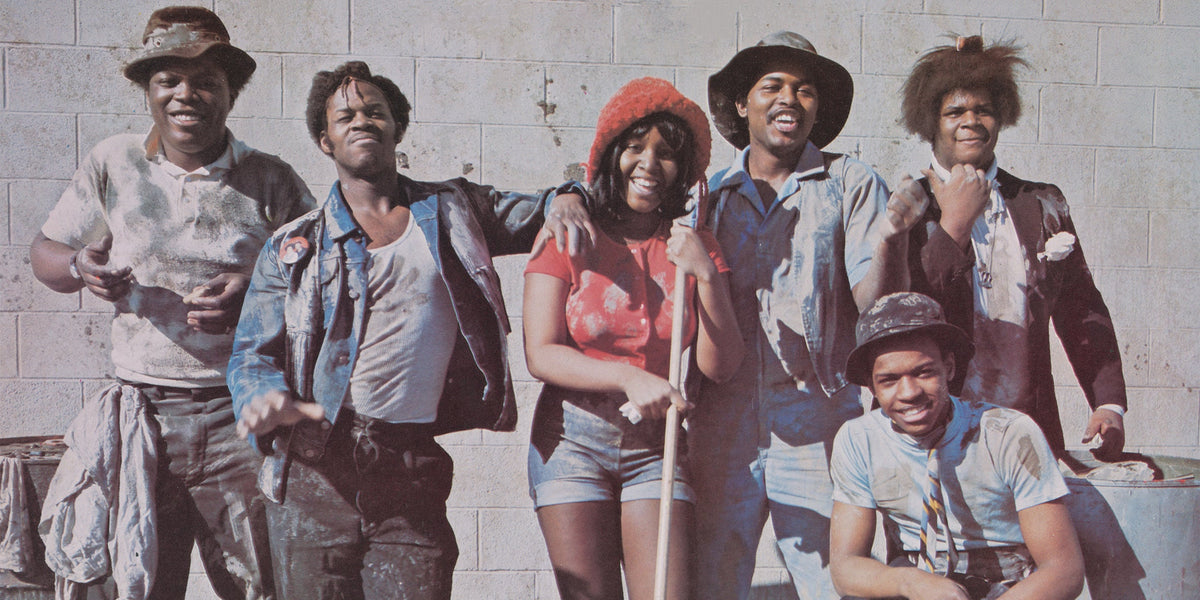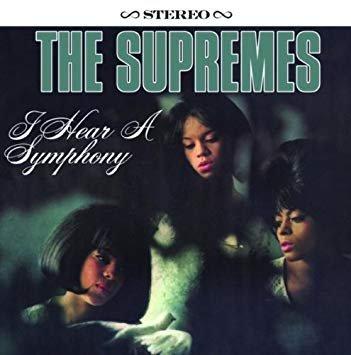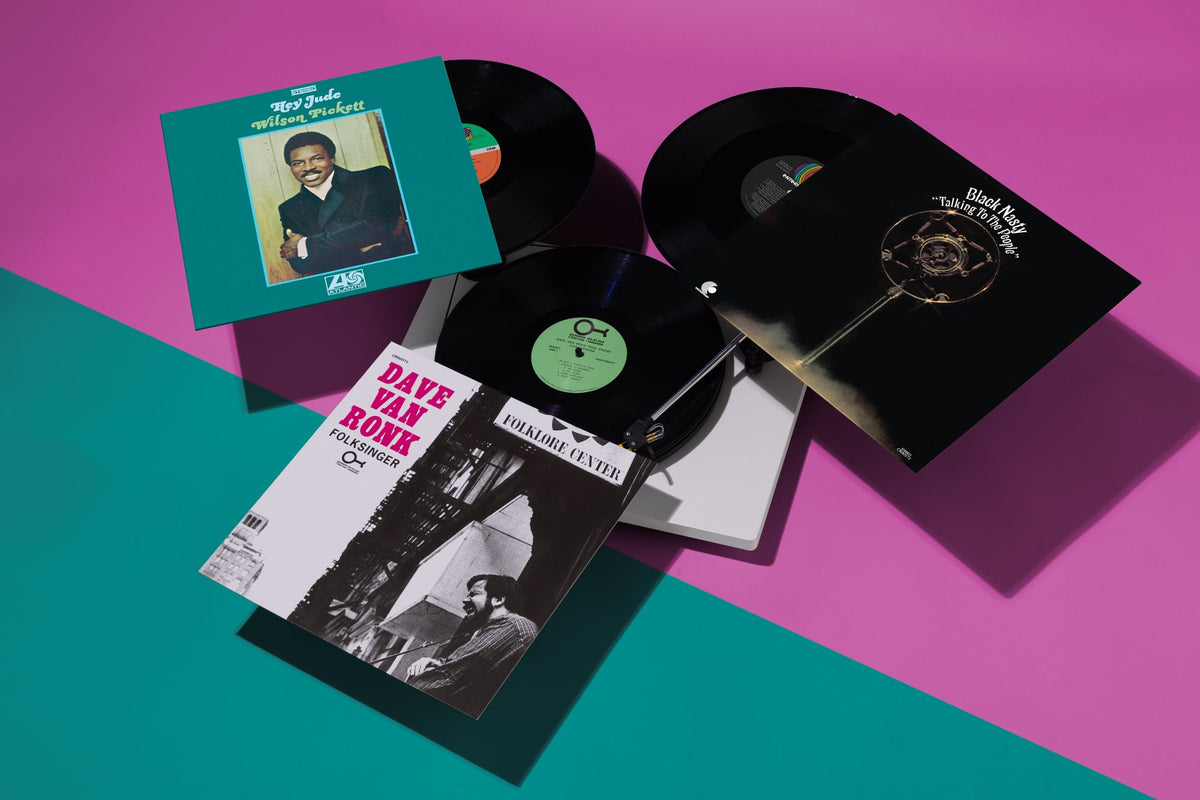How Wilson Pickett Turned a Beatles Song Into a Soul Centerpiece
On ‘Hey Jude,’ the 1969 soul album built around a totemic cover of its title track
Let’s start with the scream. We tend to define our singers by how “great” their voice is, how deftly they can ascend and descend major and minor scales, and how they can turn up and turn down the emotion inherent in their voices. But when considering Wilson Pickett, it begins and ends with his scream. He could take you on a journey, he could butter you up, he could make you feel things in your vital organs, but you don’t get a nickname like “Wicked Pickett” because you’re a crooner. His scream was there when he joined the early soul group the Falcons. It was there within the first three words of his breakthrough single, “In the Midnight Hour.” It was there when he was singing about his telephone number (“634-5789”), a variety of dance crazes (“Land of 1000 Dances”), and the supremacy of the American automobile and American women (“Mustang Sally”).
But the scream I want to draw your attention to especially is the one that happens two minutes and 44 seconds into his totemic, masterful cover of the Beatles’ “Hey Jude.” To describe it as a “scream” is to simultaneously underrate it and to overrate every other time someone’s raised voice was ever classified as a scream. It lasts, more or less, for a minute and 15 seconds, with Pickett drawing huge, gasping breaths you can often hear, as he leaves the dictates of the Beatles’ original — which had been out all of three months when Pickett recorded his take — and ascends toward a plane of existence that few of us can ever truly say we’ve reached. When Paul McCartney sang “Jude, it’s going to be alright,” you thought it was a sweet thing to say to your bandmate’s son on the eve of your bandmate’s divorce from the kid’s mom. When Wilson Pickett screams it, it’s like a ransom demand or a taped video from a supervillain in a Batman movie threatening total destruction of Gotham. It’s likely few singers have ever meant anything as much as Pickett meant when he sang that line.
It will take you, if you’re like me, at least until your 30th time through the song to realize what else is happening on Pickett’s version of “Hey Jude.” At first, you hear the scream, then you realize there are some “Na na na nas” happening somewhere in the mix, sung by the Sweet Inspirations (which featured Whitney Houston’s mom as their leader). Then, you hear the guitar solo that is going toe-to-toe with Pickett’s banshee wail, and check the credits. That really is Duane Allman, pre-the Allman Brothers — in the opinion of those at FAME Studios at the time — literally inventing the idea of “Southern Rock” in real time during that solo. It is, you realize, the only Beatles cover that will make you forget it’s a Beatles song, a remarkable feat, considering it’s a cover of the most recognizable Beatles song ever.
Pickett’s “Hey Jude” forms the spiritual centerpiece and title track of his final trip up to the mountaintop, his last true masterpiece LP. He’d take forays to Philadelphia for the new sound of soul, and even go vaguely disco in the late ’70s. But for his final album of the ’60s, a decade where he dominated the soul charts, he’d unwittingly help start southern rock, and scream his way across one of the most recognizable tunes in the history of song. Not bad for 31 minutes and eight seconds worth of music.
It is often said that a musician arrives “fully formed,” an easy shorthand for saying “this person always totally ruled.” But Wilson Pickett really did arrive fully formed; it’s hard to picture the man behind the scream as having a childhood, or being anything other than a besuited killer, ready to howl his way into your wallet via his live shows and his records. So I won’t dwell much on his childhood here, but the CliffsNotes is that he grew up the fourth of 11 kids in Alabama, before joining his dad in Detroit via the Great Migration as a young teenager. He hit Detroit in that pre-Motown era, when local hero Jackie Wilson helped kick off the realization for dozens of Detroit teens that music was as much of a career path as working the Ford line like their parents.
Pickett’s confidence in his voice and his belief in his own stardom being a certainty were there from the beginning, according to Tony Fletcher’s definitive Pickett biography, In the Midnight Hour: The Life & Soul of Wilson Pickett. After some years in the gospel circuit — where he considered Aretha Franklin a close friend — Pickett followed his idol Sam Cooke out of gospel and into soul music, joining the regionally successful Falcons, which featured future Stax songwriters and performers Eddie Floyd and Sir Mack Rice. Though Pickett quickly took over as lead singer, he never gave up looking for solo opportunities, and would pick up spot dates performing solo whenever he could in between touring obligations with the Falcons. Pickett was never in a group photo, but the Falcons had their greatest successes with him as a member. Cooke gifted them a single — “Pow! You’re In Love” — and their single “I Found a Love” got them on the radar of Atlantic Records’ legendary A&R man. As soon as it became clear that Jerry Wexler wasn’t interested in the Falcons as a group, Pickett pivoted to chasing a solo deal, and after some time on an indie label, got himself signed to Atlantic as a solo artist, leaving the group to linger on for a while before disbanding.
Pickett’s solo ambitions would run into a snag, however, as his Atlantic singles in 1964 tried too hard to box him into a respectable, sweater-and-slacks soul singer à la Sam Cooke, tamping down the scream — that, according to Fletcher, got him kicked off a James Brown tour for upstaging the Godfather — and trying to make Pickett compete with his former high school classmates like the Supremes. It wasn’t until 1965 that Wexler had the idea that would make Wilson Pickett a legend, and break him as one of the best men to ever shred his vocal cords in the name of soul. Atlantic had entered into a handshake distribution deal with Memphis’ Stax Records, spreading the raw, raucous sounds of Memphis Soul across America. Because Stax’s house band — Booker T. & the M.G.’s — and the theater where Stax Studios was located gave Stax records a feeling Wexler couldn’t replicate in New York, he had sent his most recent signing, a duo called Sam & Dave, to Stax, to essentially be plugged into the Stax system that had started making stars of Carla Thomas, William Bell and Otis Redding. Would Pickett want to do the same? Wilson agreed, and he and Wexler went down to Memphis to spend time at the studio getting a feel for how Wilson could fit in. In the course of an afternoon at the Holiday Inn near downtown Memphis, Pickett had befriended Stax producer and M.G.’s guitarist Steve Cropper, and written his defining single, “In the Midnight Hour,” his scream finally let loose on the listening public. It was his first No. 1 R&B single.
Over the course of the fall of 1965, Pickett recorded many defining songs at Stax (including, in a full circle moment, “634-5789,” a song written by his old Falcon bandmate Eddie Floyd) but something happened during one of his final sessions that no one can put their finger on — Fletcher speculates that some of the Stax leadership didn’t like him, and that Pickett started to resent having to share writing credit on his hits, but it’s also likely that Stax decided to give the studio time to their own artists — but Pickett was effectively banned from Stax, his scream silenced on McLemore Avenue.
Wexler had started experimenting with sending his artists to a different southern studio at this point anyway: FAME in Muscle Shoals, the studio that would eventually find itself ensconced in music history thanks to Aretha Franklin’s recording there (Stax passed on recording her; Booker T. Jones told me in an interview that it was the biggest mistake the label ever made). FAME was run by Rick Hall, a country enthusiast who somehow assembled one of the best soul bands ever, the Swampers, who would be heard on hundreds of soul and R&B singles in the ’60s and ’70s.
Pickett’s biggest hit — “Land of 1,000 Dances,” which peaked at No. 6 on the pop charts — was recorded there, and so was his version of “Mustang Sally,” his own outshining the original by his other former Falcons bandmate, Sir Mack Rice. Pickett was on fire; every single had the chance to rocket up the charts, and every studio he went to went nuclear in terms of influence (he also did some singles at American Sound Studio in Memphis, Chips Moman’s studio that would record everything from Dusty Springfield to Willie Nelson).
Sometime in late 1968, a young Southern guy started showing up and camping in the parking lot for FAME, desperate to be put on sessions, looking to further educate himself in all musical styles. Hall took pity on the kid and had him start playing guitar, and helping around the studio. At one point, the guy introduced himself to Pickett, the two hit it off, and he became the guitarist — and unofficial creative force — behind Pickett’s ninth studio album. Pickett had never been much of an albums artist, as his singles always sold better, but the young guitarist had the idea that Pickett do some rock covers to help him bridge the gap between the young rock audience growing their hair and obsessed by the Beatles, and soul music. The guitarist was, of course, Duane Allman, who would make some of his first-ever recordings on the ensuing album, Hey Jude.
In October of 1968, with Allman and Jimmy Ray Johnson on guitar, Jerry Jemott and David Hood on bass, Barry Beckett on piano, Stax original (and brother of Carla) Marvell Thomas on organ, and Roger Hawkins on drums, sessions for Hey Jude kicked off at FAME. The first two songs recorded were “Back In Your Arms” and “Search Your Heart,” two soaring, meat-and-potatoes soul ballads, the kind that Pickett could crush in his sleep. At some point during the sessions for the album, Allman dosed the water cooler with mescaline, which Pickett was at first furious about — he was always aware of how much money the sessions were running up — but then accepted as part of Allman’s mischievousness. You can hear Allman come into his own as the sessions continue. His winding riff makes “A Man and a Half,” the first single from the album. And you can simultaneously hear Pickett get more into performing with Allman — they always stood together, face to face in the studio — as you can practically hear them dancing on “Save Me,” “Night Owl” and “Sit Down and Talk This Over.”
Pickett went back on the road, and returned in November of 1968 to finish his LP. While on lunch break one day, the story goes, Allman hung back from the rest of the band — who always ate together — to pitch Pickett on the idea of covering “Hey Jude.” Pickett was hesitant at first, writing off most of modern rock as music for hippies, but Allman was convincing, and by the time the rest of the band got back from lunch, Pickett was already studying the lyrics to memorize the song.
Remarkably, the take you hear on the album is the band’s first take; they talked through the changes they wanted to make beforehand, and were ready to roll as soon as Pickett had the lyrics memorized. As the song hit its crescendo at that two-minute-and-44-second mark, even the band knew that something had happened. “You know what happened there?” guitarist Johnson asked Fletcher for his book. “We don’t know! Something happened. We only did that vamp one time, and we couldn’t stop. We just let it go, and it kept going and going and going.” The studio version went on for much longer than the four minutes that appeared on record; Pickett would remember later that he and Allman were playing off each other to a frenzy, him “screaming” along with Allman’s guitar. When they finally finished, everyone at FAME knew they had done something incredible. “People were going crazy,” Pickett would remember. “There’s this one secretary ain’t spoke to me since I been coming down there. All of a sudden she got her arms around my neck.” Johnson would tell Fletcher that the song represented the launch of southern rock in what Allman was playing, and when Wexler heard the rough mix the next day, he decided that it would dictate the rest of Pickett’s upcoming LP, and had them rush deliver the masters to New York for the vocal overdubs from the Sweet Inspirations. “Hey Jude” would be Pickett’s biggest hit in the U.K., and would help make soul covers of rock songs practically expected from soul artists.
The rest of the Hey Jude sessions had a new purpose, and you can hear it in the songs covered after “Hey Jude.” Pickett lent his scream to Steppenwolf’s “Born to Be Wild,” a cover that simmers in a way that the original never approached. “My Own Style of Loving” stomps like a dinosaur fleeing the asteroid, its groove so powerful and open it allows for virtuosic performances from both Allman and Pickett. But the song that comes closest to matching the fire of “Hey Jude” is Pickett’s take of “Toe Hold,” a cover of Isaac Hayes and David Porter’s Stax original. You could write a dissertation on Pickett’s diction and panache when singing the verses here — you will never be able to say “I went to see a doctor” the same way again after hearing this — and the Swampers push the music like it’s a rail car on its way over a cliff, its brakes hitting right as it teeters on the precipice.
Hey Jude would be released in February, 1969. It peaked at No. 15 on the R&B charts, and only barely cracked the Hot 100. In an unfortunate typo, Allman was credited as David Allman, which luckily didn’t prevent Eric Clapton from hiring Duane as the guitarist in Derek and the Dominos off his performance on Hey Jude. For his part, Hey Jude was really Pickett’s last hurrah, as soul morphed into disparate strands of funk — which didn’t suit Pickett, since he was the wild one on his records, not the band’s grooves — and Philly soul, which Pickett tried to adapt to, via his 1970 LP, In Philadelphia, one of Chuck Gamble and Leon Huff’s first joint production ventures before forming Philadelphia International Records. His scream was never suited for the more lush production of Philly soul, nor the styles that followed it, so Pickett mostly relied on the nostalgia circuit, and appearances in projects like the Blues Brothers to keep himself out there. After some regrettable prison sentences and substance abuse in the ’90s, he passed away at the age of 64 in 2006. His scream may have been silenced, but it is eternal, calling out from one of soul music’s most important discographies, Hey Jude included.
Andrew Winistorfer is Senior Director of Music and Editorial at Vinyl Me, Please, and a writer and editor of their books, 100 Albums You Need in Your Collection and The Best Record Stores in the United States. He’s written Listening Notes for more than 30 VMP releases, co-produced multiple VMP Anthologies, and executive produced the VMP Anthologies The Story of Vanguard, The Story of Willie Nelson, Miles Davis: The Electric Years and The Story of Waylon Jennings. He lives in Saint Paul, Minnesota.
Related Articles
Join the Club!
Join Now, Starting at $36Pages







